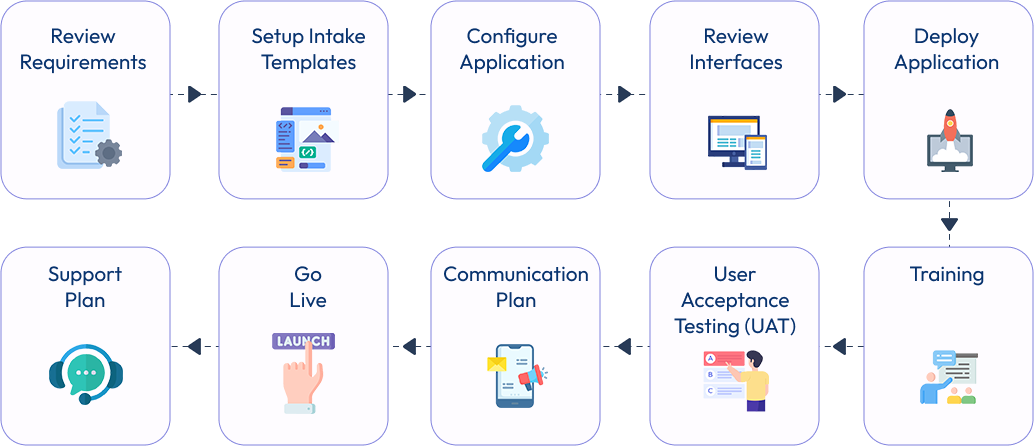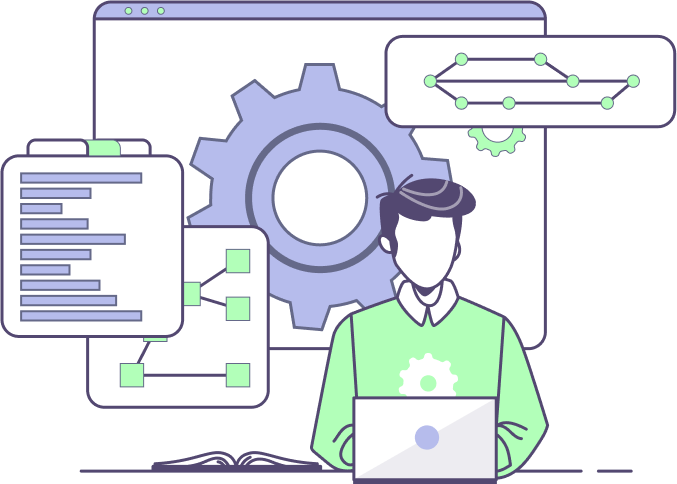Step 1: Vision and Success Criteria
A clear vision is essential to fully realize the benefits and potential of Titan's implementation. This vision should encompass the anticipated benefits of adoption, the impact on the user community, and the integration with existing systems. Importantly, it should also align with your organization’s broader IT roadmap to ensure consistency and support long-term goals.
Define Success:
To define what success looks like post-implementation, it’s critical to first assess your organization’s current baseline. This includes evaluating key parameters such as:
• Performance Metrics: Are there existing bottlenecks or areas for
improvement?
• Asset Utilization: How efficiently are resources currently being deployed?
• Traceability: Is there a gap in tracking processes or data?
• Cost of Testing and Retesting: Can implementation reduce overheads?
• Product Development Cycle Duration: Are there delays or inefficiencies in the lifecycle?
Once these baselines are established, measurable goals can be set to track improvements post-implementation. Adoption rates within the user community are another key indicator of success. Equally important is post-rollout support to help users integrate Titan into their workflows and adapt to the organization’s evolving needs over time.
Best Practices for Establishing a Vision:
1. Engage stakeholders early: Collaborate with leadership, IT, and end-users to align on objectives and priorities.
2. Focus on Measurable Outcomes: Define KPIs that reflect both immediate and long-term goals.
3. Incorporate feedback loops: Build a framework for regular feedback from the user community to adjust and refine the implementation.
4. Benchmark against industry standards: Leverage data and insights from similar implementations to set realistic and aspirational goals.
5. Align with Strategic Goals: Ensure Titan’s implementation supports broader organizational strategies like digital transformation or operational excellence.
Step 2: Assemble Your Team
A successful Titan rollout requires a dedicated and diverse team representing various sites, locations, and domains within your organization. This team plays a pivotal role in ensuring that all aspects of the implementation are effectively addressed.
Key Roles:
• Executive Sponsor: Provides strategic oversight and ensures alignment with organizational goals.
• Project Owner: Oversees day-to-day implementation efforts and acts as the central point of contact.
• Technical Subject Matter Experts (SMEs): Specialists from each domain or area who bring critical expertise to guide configuration and integration.
Collaborate Across Stakeholders:
Engaging IT, management, and end-users is essential to building consensus and ensuring priorities are set collaboratively. Early involvement of all affected user groups fosters a sense of ownership in the transformation process and ensures their needs are addressed.
Pilot Implementation:
Start with a pilot phase, such as a Minimum Viable Product (MVP) or Proof of Value, to validate Titan’s capabilities and refine processes before a full-scale rollout. This low-risk approach helps build confidence among stakeholders.
Step 3: Define Requirements and Scope
A successful Titan implementation begins with clearly defining the functional and nonfunctional requirements for your organization. Compiling these detailed requirements provides clarity on your organization’s needs, supports the development of business cases, and establishes the technical criteria for evaluating and implementing solutions.
Create a Comprehensive Requirement Document:
• Use a standard requirements template or Titan’s intake template to ensure all critical needs are captured.
• Identify specific objectives across teams and domains to align the platform with organizational goals.
• Include nonfunctional needs such as scalability, performance, security, and compliance standards.
Prioritize Requirements for Rollout:
Not all requirements can or should be met during the initial rollout. Stack rank requirements based on their importance to the organization’s immediate goals and long-term vision. This helps:
• Focus on critical capabilities that deliver the highest value.
• Develop a phased rollout plan.
• Identify opportunities for future enhancements when resources are available.
Collaborative Rollout Planning:
The Titan team works closely with stakeholders to refine the rollout plan, leveraging tools like a risk matrix to anticipate challenges and keep the implementation on track.
Step 4: Implementation Plan
The implementation of the Titan platform typically spans from a few weeks to several months, depending on the complexity of the requirements. A phased rollout strategy is recommended to ease adoption, minimize risk, and deliver accelerated ROI.

1. Review Requirements
• Objective: Ensure all project requirements are understood and agreed upon.
• Activities:
○ Gather all requirement documents.
○ Hold a meeting with key stakeholders to review and confirm requirements.
○ Document any changes or additions to the requirements.
○ Obtain formal approval of the requirements.
2. Setup Intake Templates
• Objective: Titan has standardized templates for project intake to ensure consistent data collection.
• Activities:
○ Standard intake templates are populated by Titan resources in collaboration with your team as an intermediate step.
3. Configure Application
• Objective: Customize and configure the Titan platform according to the specified requirements.
• Activities:
○ Configure the application based on the approved requirements.
○ Develop custom modules where needed to support in-scope requirements.
○ Perform initial testing to ensure the product meets the requirements.
4. Review Interfaces
• Objective: Ensure that all application interfaces are properly set up and functioning.
• Activities:
○ Identify all interfaces that need to be reviewed (e.g., API, data integrations).
○ Test each interface to verify proper functionality.
○ Document any issues or discrepancies and address them.
○ Obtain approval from stakeholders on interface configurations.
5. Deploy Application
• Objective: Deploy the application to the production environment.
• Activities:
○ Prepare the production environment for deployment.
○ Coordinate with the IT team to schedule deployment.
○ Execute the deployment process.
○ Verify that the deployment was successful and the application is functioning as expected.
6. Training
• Objective: Provide training to users to ensure they are proficient in using the new application.
• Activities:
○ Schedule training sessions for different user groups.
○ Conduct training sessions and provide hands-on practice.
○ Gather feedback from trainees and make necessary adjustments.
7. User Acceptance Testing (UAT)
• Objective: Ensure that the application meets the needs of the users and the requirements.
• Activities:
○ Develop UAT test cases based on requirements.
○ Identify UAT participants and schedule testing sessions.
○ Conduct UAT and document any issues or feedback.
○ Address any issues and retest as necessary.
○ Obtain formal sign-off from UAT participants.
8. Communication Plan
• Objective: Ensure all stakeholders are informed about progress and key milestones, updates.
• Activities:
○ Develop a communication plan outlining the frequency and methods of communication.
○ Identify key stakeholders and their communication preferences.
○ Ensure that any issues or changes are communicated promptly.
9. Go Live
• Objective: Officially launch the application and make it available to all users.
• Activities:
○ Perform final checks and validations before the go-live date.
○ Communicate the go-live schedule and any expected downtime to all stakeholders.
○ Execute the go-live process and monitor the application closely.
○ Provide immediate support for any issues that arise during the go-live period.
10. Support Plan
• Objective: Provide ongoing support and maintenance for the application vital for maintaining success of the implementation.
• Activities:
○ Develop a support plan outlining the support structure and procedures.
○ Establish a system for logging and tracking support issues.
○ Regularly review support issues and make necessary improvements to the application.

 Step 2: Assemble Your Team
Step 2: Assemble Your Team 


